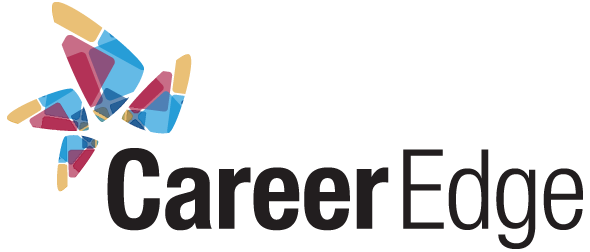
As we welcome 2025, we at Career Edge are thrilled to reflect on our 2024 impact. Despite global challenges in the job market, we managed to make significant strides in fostering connections between employers and highly qualified candidates.
This impact report highlights our milestones, partnerships, and how we can help your organization thrive in the coming year.
2024 By the Numbers
In 2024, Career Edge achieved milestones that underscore our commitment to bridging the gap between top talent and leading employers. These achievements highlight the trust our partners place in us and the impact we create together.
- 5,000 candidates registered: Skilled individuals eager to contribute to diverse industries.
- 35 employer partners: Organizations that trust Career Edge to deliver top-tier talent.
- 200 jobs posted: Transforming lives through meaningful employment opportunities.
- 110 alumni graduated: Successfully launching their careers in various fields.
Top Employers of 2024
Our partnerships with industry leaders like RBC and Loblaw set the tone for 2024. These collaborations not only reflect our dedication to fostering diversity and inclusivity but also showcase the tangible benefits of working with Career Edge.
- RBC: Celebrated as a Diversity Champion for its commitment to inclusivity.
- Loblaw: Honored as a Future Leaders Champion for investing in tomorrow’s workforce.
Top Industries Represented in 2024
The industries we served in 2024 exemplify the breadth and depth of the talent we connect with our employer partners. From technology to finance, our candidates have made their mark in diverse sectors, driving innovation and growth.
Our diverse pool of talent found success across the following industries:
- Accounting
- Human Resources
- Information Technology
- Financial Services
- Marketing
These industries underscore our ability to connect employers with candidates who possess the skills and expertise to drive innovation and success.
Why Career Edge?
Career Edge sets itself apart by offering innovative solutions tailored to employers’ needs. Whether it’s streamlining the hiring process, championing diversity, or providing career development support, we go above and beyond to create meaningful connections between employers and top talent. Here’s how we make a difference:
1. Streamlined Recruitment Process
Recruitment can be a daunting task, but Career Edge simplifies the process. We take on the heavy lifting so that employers can focus on what matters most—building their teams with the right people.
We take the burden off employers by handling the most time-consuming aspects of recruitment. From sourcing candidates to shortlisting the best talent, our team ensures you only meet individuals who are genuinely suited for your roles.
2. Diversity, Equity, and Inclusion (DEI)
Diversity and inclusion are at the heart of what we do. By championing these values, we create equitable opportunities for all candidates while ensuring that employers benefit from the innovation and perspectives a diverse workforce brings.
Employers who work with Career Edge benefit from our commitment to DEI, as we connect them with candidates from underrepresented groups, including newcomers to Canada, people with disabilities, and recent graduates. This approach fosters a workplace culture that drives innovation, collaboration, and long-term success.
3. Career Development Support
Our commitment to candidate success doesn’t stop at job placement. Through tailored workshops and career development sessions, we empower candidates to thrive in their roles, ensuring long-term success for both them and their employers.
Employers like Loblaw have highlighted the value of this approach, as candidates who participate in our career development programs demonstrate confidence, preparedness, and a strong understanding of workplace expectations. This level of support contributes to higher retention rates and positive candidate experiences.
4. A Trusted Partner for Employers
Employers who partner with Career Edge gain more than recruitment services—they gain a dedicated ally. From maintaining employer branding to fostering positive candidate experiences, we act as an extension of your team.
We act as an extension of your team. From maintaining your employer brand to ensuring candidates feel supported throughout the hiring process, we are committed to your success.
2024 Success Stories
Our alumni’s journeys are testaments to the transformative power of meaningful employment. However, it’s not just our candidates who benefit from Career Edge’s expertise—our employer partners have equally inspiring success stories.
Here’s what Loblaw had to say about their partnership with us:
“Career Edge has a long-standing history and strong reputation for supporting students and working with employer partners to help make connections. Having the support of Career Edge to not only facilitate the recruitment process but also offer career development programming was important for us.
With Career Edge helping to support recruitment and asking the right questions upfront, candidates presented to hiring managers leveraged this knowledge better during interviews.
The Career Edge team very much acted as an extension of the Loblaw team, which was important to us from a branding perspective. Candidates felt comfortable working with the CE team and ensured the process was a positive one. Having Career Edge also offer career skills workshops/sessions for all candidates again helped to contribute to that positive candidate/student experience. It has been an absolute pleasure working with Career Edge and partnering with them for our internal student colleague recruitment program.” ~ Michelle Reyes – Sr. Manager, Talent Acquisition, Campus Strategy – Loblaw Company Limited
These stories showcase the mutually beneficial relationships we cultivate between employers and candidates, proving that investing in diversity and inclusion yields tangible business results.
Looking Ahead: Our Goals for 2025
Building on the momentum of 2024, we aim to:
- Expand our network to work with more employer partners.
- Register niche candidates ready to excel in their fields.
- Align with emerging industries to meet future workforce demands.
- Develop new initiatives that further DEI in recruitment.
- Focus on hiring more people with Disabilities.
By staying ahead of industry trends and continuously enhancing our services, we are committed to helping employers and candidates succeed in a rapidly evolving job market.
Partnering with Career Edge in 2025 means being part of a movement that prioritizes innovation, inclusivity, and long-term success. Let’s work together to make an even greater impact in the coming year. Get in touch with us now!










